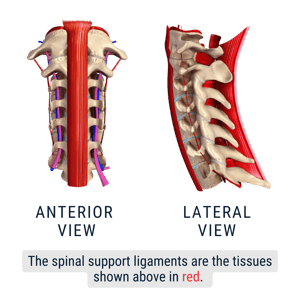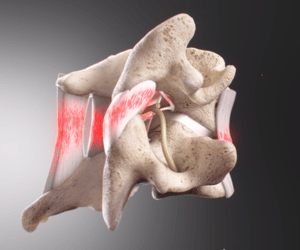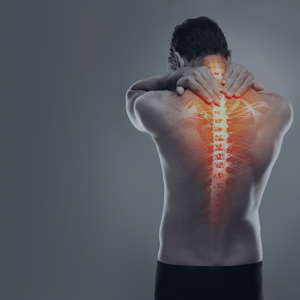Introduction
In today's exploration of spinal injury management, we delve into the groundbreaking role of Spinal Kinetics. This innovative approach has transformed the way spinal injuries are diagnosed and treated, marking a significant advancement in the injury market.
What is Spinal Kinetics?
At the forefront of revolutionizing spinal ligament injury testing stands Spinal Kinetics, a beacon of innovation in the medical and chiropractic realms. Here, a paradigm shift has been ushered in – a standardization that ensures every patient, irrespective of the caregiver they consult, receives a consistent and precise assessment of their spinal injuries.
Picture this: much like a broken bone, a spinal injury remains constant, demanding a uniform approach across all providers. Whether it's a fracture or a ligament strain, the injury remains the same, necessitating a unified assessment protocol. Just as a dentist approaches a cavity universally, regardless of their alma mater or geographical location, so too should spinal injuries be addressed with unwavering consistency.
Yet, lamentably, such standardization has eluded the spinal injury market, possibly contributing significantly to subpar physical recovery outcomes. Enter Spinal Kinetics – a disruptive force in the landscape of technology and service – poised to change the game.
In an era where precision and consistency are paramount, Spinal Kinetics stands as a beacon of hope, promising a future where every spinal injury is met with the same meticulous attention and care, setting a new standard for excellence in patient care and recovery.
All injuries are derangements to a body part or parts. The severity of the injury itself is determined by the location and the severity of the derangement, as well as by the importance of the part deranged. A mild skin laceration may not kill you but a small derangement opening the carotid artery may.
Spinal injuries have been made way too complicated in the past when they are quite simple, as there are only three derangements (injuries) that we are looking for or only three ways that the spine can derange.


The spine only has two tissues to derange: bone and connective tissue, otherwise called ligaments. Bone injuries are called fractures and are worked up with X-ray and CAT scan studies. The spinal connective tissue is a complex network of 220 specialized ligaments in the spine, including 23 discs, and injuries to these tissues are the most problematic and costly, in terms of both expense in rehabilitation, but also the area of chronic pain and suffering.
Connective tissue injuries are twofold or divided into two categories, the disc, and the non-disc spinal support ligaments. The disc deranges through the severity of herniation, the non-disc ligament injuries cause the spine to show excessive motion or instability.
Our company excels in assisting doctors to accurately determine the severity and the location of the non-disc spinal support ligament injury. These injuries can produce far more symptoms and long-term problems than simple disc herniations. These injuries also magnify the problems associated with any disc herniation or even a disc bulge. They also can prolong the amount of time it takes to rehabilitate these patients.
The Significance of Excessive Motion Testing
Within the realm of transformative spinal care, Spinal Kinetics proudly presents its groundbreaking service: Excessive Motion Testing. At our forefront, this innovative procedure, known as CRMA™ (Computerized Radiographic Mensuration Analysis) reports, represents a seismic shift in how we approach spinal assessments. Coined and trademarked by us, CRMA™ report signifies not just an excessive motion test, but a comprehensive analysis conducted by an impartial third-party medical radiologist, ensuring utmost objectivity.
This cutting-edge test serves as a linchpin for all treating providers, offering invaluable insights into the severity and precise location of non-disc spinal support ligament injuries. Such information is indispensable for crafting tailored treatment regimens, benefiting chiropractors, physical therapists, medical specialists, and even spinal surgeons tasked with addressing the instabilities stemming from these injuries.
In an era where precision is paramount, Spinal Kinetics leads the charge, empowering healthcare professionals with the tools and insights necessary to deliver unparalleled care and treatment outcomes for patients with spinal injuries.
Technological Excellence and Independent Verification
At the heart of our process lies the indispensable role of AI in precisely identifying anatomical landmarks. Every procedure is meticulously assisted by AI, ensuring the utmost accuracy in locating these crucial points. Following AI analysis, the identified points undergo thorough scrutiny.
Once identified, these points are then sent to licensed radiologists for review. The radiologists meticulously evaluate and either accept them or manually adjust them as needed. This critical step ensures that each point is rigorously examined by a qualified professional.
Subsequently, the points return to our quality control team for further assessment. Here, they undergo a comprehensive review process, either gaining approval or being sent back for refinement. This iterative process continues until full agreement is reached among all involved parties, guaranteeing the highest level of precision and reliability.
Such meticulous attention to detail underscores our commitment to delivering unparalleled quality in every aspect of our procedures. At Spinal Kinetics, we prioritize accuracy and consensus, ensuring that all stakeholders are fully satisfied with the results.
Impact on Patient Outcomes
Over half of spinal injury patients may not fully recover, a statistic often attributed to inadequate diagnosis and treatment. This company addresses this issue by aiming to improve patient outcomes through better diagnostics.
Why Choose This Company?
With 13 years of experience and a national presence, the company is not just an enterprise but a standard-bearer in spinal injury diagnostics. Our commitment to cutting-edge technology and precise procedures has established us as a leader in the field.
Conclusion
In summary, this company is revolutionizing the ability of the spinal injury market to standardize spinal injury evaluations. For spinal injury professionals seeking to enhance their diagnostic capabilities, so that they can achieve better patient outcomes, we offer a proven, reliable solution.
.png?width=500&height=140&name=Spinal%20Kinetics%20-%20FDA%20Cleared%20Logo%20(2).png)
